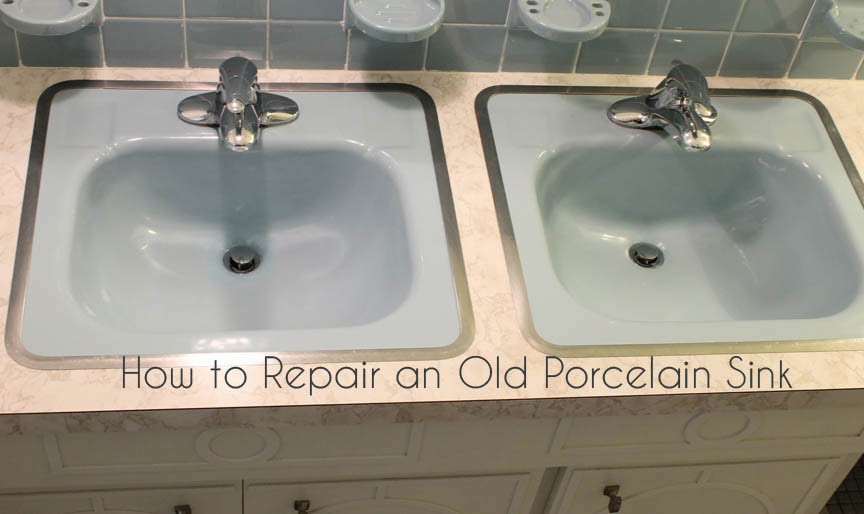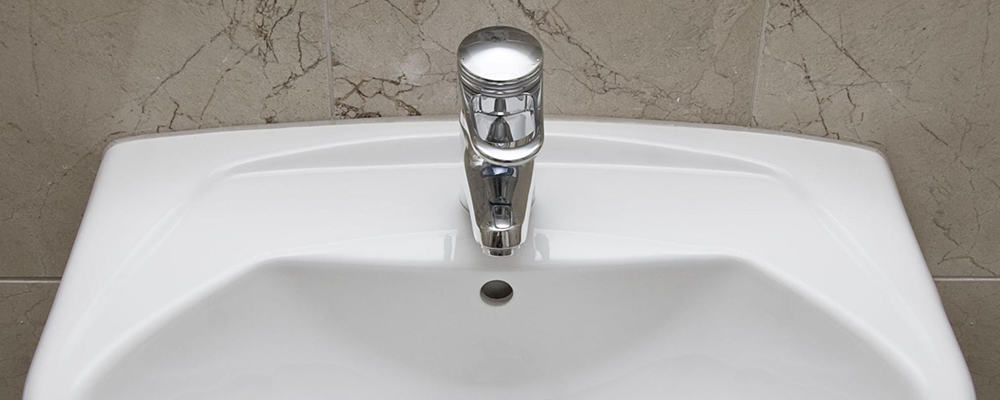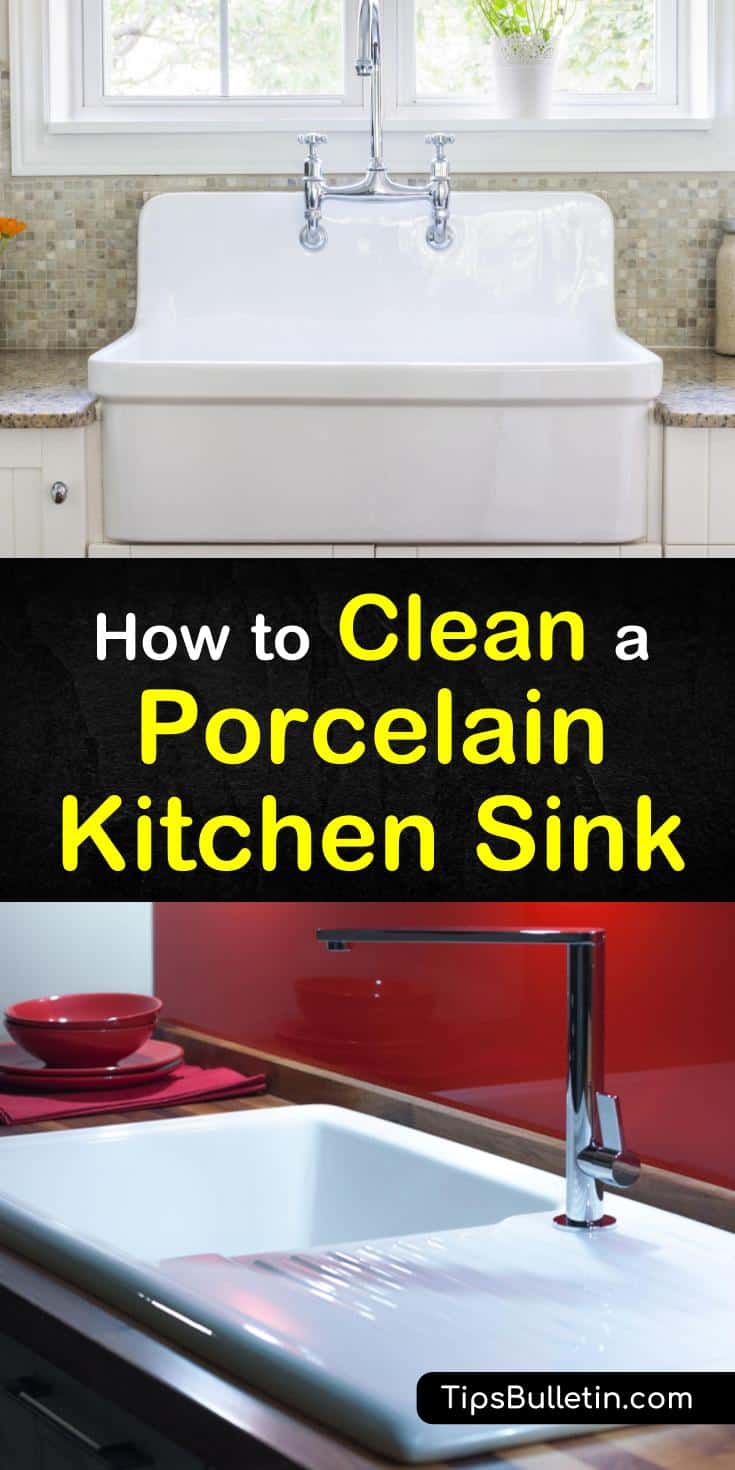How to Repair a Flaking Porcelain Kitchen Sink
If you have noticed flakes or chips on the surface of your porcelain kitchen sink, don't panic. This is a common issue that can be easily fixed with a few simple steps. In this guide, we will walk you through the process of repairing a flaking porcelain kitchen sink, so you can have it looking like new again in no time.
DIY Guide: Fixing a Flaking Porcelain Kitchen Sink
Repairing a flaking porcelain kitchen sink can be done at home with the right tools and materials. It's a budget-friendly option for those who want to avoid hiring a professional. With a little bit of time and effort, you can restore your sink's surface and prevent further damage.
Steps to Repair Flaking Porcelain on a Kitchen Sink
The first step in repairing flaking porcelain on a kitchen sink is to thoroughly clean the affected area. Use a gentle cleaner and a soft cloth to remove any dirt or grime. Once the surface is clean, dry it completely before moving on to the next step.
Next, use a fine-grit sandpaper to gently sand down the flaking areas. Be careful not to damage the surrounding porcelain. Once the flaking is smooth and level with the rest of the sink, wipe away any dust with a damp cloth.
Now it's time to fill in the flaking areas with a filler specifically designed for porcelain. Apply the filler with a putty knife, making sure to smooth it out evenly. Let it dry completely before sanding down any excess and buffing the surface with a soft cloth.
Finally, apply a coat of porcelain glaze to seal and protect the repaired areas. This will also help to blend the repaired sections with the rest of the sink. Allow the glaze to dry completely before using the sink again.
Tips for Fixing a Flaking Porcelain Kitchen Sink
When repairing a flaking porcelain kitchen sink, it's important to remember a few key tips. First, always make sure the surface is clean and dry before starting the repair process. This will ensure that the filler and glaze adhere properly.
Additionally, be gentle when sanding down the flaking areas. You don't want to damage the surrounding porcelain and create more work for yourself. Take your time and work carefully.
Lastly, make sure to use a porcelain-specific filler and glaze. These products are designed specifically for porcelain and will provide the best results.
Common Causes of Flaking Porcelain on Kitchen Sinks
Flaking porcelain on kitchen sinks can be caused by a variety of factors. The most common cause is general wear and tear over time. As the sink is used, the porcelain can become worn down and start to flake.
Another common cause is using harsh cleaning products or abrasive materials on the sink's surface. This can strip away the protective glaze and leave the porcelain vulnerable to damage.
In some cases, the sink may have been improperly installed, causing stress on the porcelain and leading to flaking. It's important to hire a professional for sink installation to avoid this issue.
Materials Needed to Repair a Flaking Porcelain Kitchen Sink
To repair a flaking porcelain kitchen sink, you will need a few basic materials. These include a gentle cleaner, fine-grit sandpaper, a porcelain filler, a putty knife, porcelain glaze, and a soft cloth. You may also want to have a damp cloth on hand for cleaning up any excess filler or dust.
Professional Repair Options for Flaking Porcelain Kitchen Sinks
If you don't feel comfortable repairing your flaking porcelain kitchen sink yourself, you can always hire a professional. They will have the expertise and specialized tools to repair the sink quickly and efficiently.
Professional repair options may include resurfacing the sink, which involves sanding down the damaged areas and applying a new layer of porcelain glaze. They may also be able to replace the entire sink, depending on the extent of the damage.
Preventing Flaking Porcelain on Kitchen Sinks
The best way to prevent flaking porcelain on kitchen sinks is to take proper care of the sink's surface. This means using gentle cleaners and avoiding abrasive materials. It's also important to avoid dropping heavy objects or banging pots and pans on the sink's surface.
If you have hard water, using a water softener can also help prevent mineral buildup that can cause damage to the porcelain. Regularly cleaning and maintaining your sink can go a long way in preventing flaking.
How to Maintain a Flaking Porcelain Kitchen Sink
To maintain a flaking porcelain kitchen sink, it's important to continue using gentle cleaners and avoiding abrasive materials. You may also want to periodically reapply a coat of porcelain glaze to keep the surface protected.
If you notice any small flakes or chips, be sure to repair them right away to prevent further damage. Regular maintenance will help keep your sink looking like new for years to come.
When to Replace a Flaking Porcelain Kitchen Sink
In some cases, repairing a flaking porcelain kitchen sink may not be possible or cost-effective. If the damage is extensive or the sink is very old, it may be time to consider replacing it.
If you do decide to replace your sink, make sure to properly dispose of the old one. You may also want to hire a professional for the installation to ensure it is done correctly and to avoid any potential issues in the future.
How to Repair Flaking Porcelain Kitchen Sink: A Step-by-Step Guide

Introduction
 Porcelain kitchen sinks are a popular choice for homeowners due to their durability, easy maintenance, and elegant appearance. However, over time, even the most well-cared for sink can start to show signs of wear and tear, such as flaking or chipping. This not only affects the aesthetic of your kitchen but can also lead to further damage if left untreated. The good news is that repairing a flaking porcelain kitchen sink is a relatively simple process that can be done at home. In this article, we will guide you through the steps to repair your sink and restore it to its former glory.
Porcelain kitchen sinks are a popular choice for homeowners due to their durability, easy maintenance, and elegant appearance. However, over time, even the most well-cared for sink can start to show signs of wear and tear, such as flaking or chipping. This not only affects the aesthetic of your kitchen but can also lead to further damage if left untreated. The good news is that repairing a flaking porcelain kitchen sink is a relatively simple process that can be done at home. In this article, we will guide you through the steps to repair your sink and restore it to its former glory.
Gather Your Materials
 Before you begin the repair process, it's important to gather all the necessary materials. This will ensure a smooth and efficient repair. You will need
epoxy adhesive, sandpaper, a putty knife, a clean cloth, and matching porcelain paint
. These items can be easily found at your local home improvement store.
Before you begin the repair process, it's important to gather all the necessary materials. This will ensure a smooth and efficient repair. You will need
epoxy adhesive, sandpaper, a putty knife, a clean cloth, and matching porcelain paint
. These items can be easily found at your local home improvement store.
Clean and Prepare the Sink
 The first step in repairing a flaking porcelain kitchen sink is to thoroughly clean and prepare the affected area. Use a mild detergent and warm water to clean the sink, making sure to remove any dirt or debris. Once the sink is clean, use the sandpaper to gently sand the flaking area. This will create a rough surface for the adhesive to bond to.
The first step in repairing a flaking porcelain kitchen sink is to thoroughly clean and prepare the affected area. Use a mild detergent and warm water to clean the sink, making sure to remove any dirt or debris. Once the sink is clean, use the sandpaper to gently sand the flaking area. This will create a rough surface for the adhesive to bond to.
Apply the Epoxy Adhesive
 Once the sink is clean and sanded, it's time to apply the epoxy adhesive. Using a putty knife, carefully spread a thin layer of epoxy onto the flaking area. Make sure to cover the entire affected area, including the edges. Use the putty knife to smooth out the epoxy and remove any excess. Allow the adhesive to dry completely according to the manufacturer's instructions.
Once the sink is clean and sanded, it's time to apply the epoxy adhesive. Using a putty knife, carefully spread a thin layer of epoxy onto the flaking area. Make sure to cover the entire affected area, including the edges. Use the putty knife to smooth out the epoxy and remove any excess. Allow the adhesive to dry completely according to the manufacturer's instructions.
Sand and Paint
 After the adhesive has dried, use the sandpaper again to smooth out any rough spots and create a level surface. Wipe away any dust or debris with a clean cloth. Next, use the matching porcelain paint to cover the repaired area. Apply the paint in thin, even coats, allowing each coat to dry before adding another. This will ensure a seamless finish.
After the adhesive has dried, use the sandpaper again to smooth out any rough spots and create a level surface. Wipe away any dust or debris with a clean cloth. Next, use the matching porcelain paint to cover the repaired area. Apply the paint in thin, even coats, allowing each coat to dry before adding another. This will ensure a seamless finish.
Final Touches
 Once the paint has dried, your sink should look as good as new. However, if the repaired area is slightly raised, you can use a fine-grit sandpaper to gently sand it down. Finally, give your sink a thorough clean with a mild detergent and warm water to remove any remaining residue.
Once the paint has dried, your sink should look as good as new. However, if the repaired area is slightly raised, you can use a fine-grit sandpaper to gently sand it down. Finally, give your sink a thorough clean with a mild detergent and warm water to remove any remaining residue.
Conclusion
 By following these simple steps, you can easily repair a flaking porcelain kitchen sink and restore its appearance. Regular cleaning and maintenance can also help prevent future flaking or chipping. However, if the damage is extensive or you are unsure of how to proceed, it's always best to consult a professional. With proper care, your porcelain kitchen sink can continue to be a beautiful and functional addition to your home.
By following these simple steps, you can easily repair a flaking porcelain kitchen sink and restore its appearance. Regular cleaning and maintenance can also help prevent future flaking or chipping. However, if the damage is extensive or you are unsure of how to proceed, it's always best to consult a professional. With proper care, your porcelain kitchen sink can continue to be a beautiful and functional addition to your home.








































































